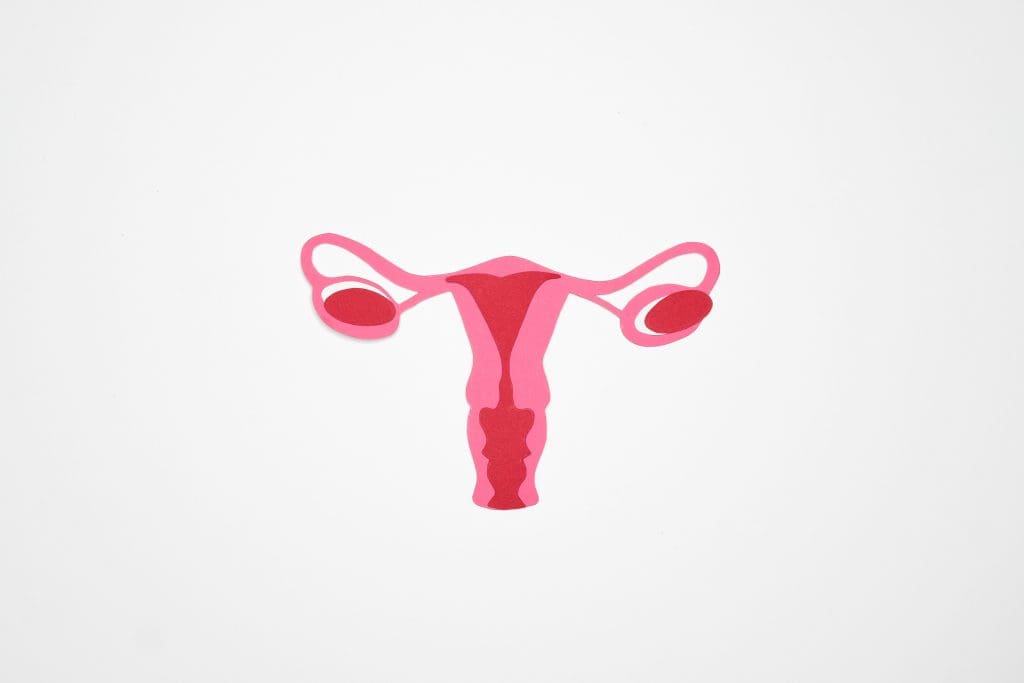PART 1 – SEX ORGAN CHANGES AFTER MENOPAUSE
In my last blog I promised to explain the impact of menopause-related hormonal changes on body organs and tissues by addressing the critical question –“What really are the true effects of menopause?”
This week’s blog will look at the changes on the sex organs after menopause, and what symptoms might develop and become bothersome as a result of these changes.
Life and body functions do not occur in isolation. Ovarian function and ultimately its failure after menopause is after all only one of all the body organs and functions that are aging. This creates one of the most difficult challenges in medical research – to separate the coexisting effects of aging on body function and disease development from the true and direct effects of the reduction in sex steroid production by the ovary.
There is yet another monumental challenge: to determine whether those effects that have been demonstrated to be directly related to menopause can be reversed by some form of hormonal treatment. It cannot be simply taken for granted that prescribing hormones can automatically reverse symptoms or disease processes initiated by loss of hormones with menopause.
So let me to get on with my first task, answering that key question “What are the true effects of menopause?”
The best way of answering this crucial question is to systematically go through the parts of the body and explain what we know about each. Through this process, in this and in following week’s blogs, I will then differentiate between:
• The true early effects and potential symptoms
• The late-presenting problems
TRUE MENOPAUSE-RELATED EFFECTS
SEX ORGAN CHANGES AFTER MENOPAUSE
OVARIES: Earlier I described how eggs run out at menopause and the ability of the ovary to make estrogen and progesterone follows suit. I also alluded to the packing cells (stromal cells). Something I have found both intriguing and a source of regret, because so little research has been dedicated to the stromal cells, is how they may change after menopause. In some women, they become fewer and fewer, and the postmenopausal ovary shrivels into a small whitish organ resembling a firm acorn. As you would expect, it has very little activity or function. But in many other women, the opposite happens. The stromal cells increase in size and number, a process called hypertrophy and hyperplasia, and their cellular chemical activity increases. Indeed, that ovary remains much the same size and consistency as before the menopause.
What is most amazing about this second type of ovary is that it continues to be an active endocrine gland. But instead of producing the female sex steroids, it produces male hormone (androgens). Now consider another intriguing piece of scientific information. The ability of the body to convert male hormone into estrogen increases with both increasing body weight and with age. As aging is inevitable, and most women gradually increase their body weight as they get older, the result is an extraordinary situation that I call a compensatory effect.
This compensatory effect in summary is an ovary that has transformed itself into a gland that has changed its function, developing the ability to produce a precursor to estrogen, namely, an androgen. With the body’s increasing ability to convert the androgen to estrogen, the result is a sort of self-regulation in which a new source for estrogen has been developed. This may actually explain the remarkably different way different women respond to menopause, and whether they need hormone treatment or not. This information should begin to plant the seed in your mind as to why I subtitled my book “CHANGE YOUR MENOPAUSE – why ne size does not fit all.”
VAGINA: Withdrawal of estrogen eventually leads to marked thinning of the vaginal lining, a condition called vaginal atrophy. For the woman who is not sexually active, this may have little consequence; indeed she is highly unlikely to be aware that she has it. Unfortunately, with the thinning of the vaginal lining, there are fewer of the surface cells to shed.
Before menopause, these cells produce a sugar called glycogen, and the normal vaginal flora thrives on this. As they consume it, they make the vagina slightly acidic and this keeps out foreign invaders like yeast and certain bacteria. So the postmenopausal vagina is more susceptible to infections, a condition called atrophic vaginitis. This condition can present with itching, burning, vaginal discharge, and vaginal pain. The sexually active woman has a greater problem, as the thin vaginal lining can be a source of pain during intercourse, a condition called dyspareunia.
VULVA: After menopause, there is a loss of pubic hair and the labia shrink in size. The opening to the vagina, the introitus, narrows in the absence of regular sexual activity, and heterosexual women becoming sexually active after a time of abstinence can suffer pain and difficulty with penetration.
UTERUS: Initially, the on-again off-again production of hormones will cause menstrual periods to be irregular, and flow can increase or decrease compared to the past. This time is often referred to as the perimenopause. Ultimately, the periods stop, which is, of course, menopause. Loss of periods is called amenorrhea in medical terminology.
PELVIC FLOOR AND URINARY TRACT: The bony pelvis is like a basin without a bottom. The bottom of this bony pelvis is closed by one of the most remarkable systems in our bodies. The pelvic floor is a muscular diaphragm that attaches all around the base of the bony pelvis. In four-legged animals, the abdominal wall supports the weight of all the abdominal contents. When our ancestors decided to stand erect so that they could look for their prey over longer distances, much of our body dynamics changed. The muscular diaphragm plugging the bottom of the bony pelvis was instantly required to support everything contained above.
The Achilles’ heel of this system is the necessity for openings in the muscular diaphragm through which the bladder, vagina, and rectum could reach the outside. That is, these openings could be a problem in plugging the pelvis.
First problem is labor and delivery – a large baby has to get out through a small aperture that as a result can become stretched and damaged. Next, the pelvic diaphragm is under the influence of hormones, so withdrawal after menopause can result in the diaphragm becoming weaker, thinner, and more flaccid. Together with tissue aging, the bladder can weigh down and bulge through the top wall of the vagina (which after all does also function as the floor of the urinary bladder). This stretched bulge is called a cystocele. Alternately, with the bottom wall of the vagina being the roof of the rectum, a bulge from that direction is called a rectocele. Even the uterus itself may drop and this is called uterine prolapse. In many women, even if present altogether or individually, there may be few or no symptoms. In others there may be a sensation of something dropping or falling out.
Postmenopausal changes in the bladder, and the pipe passing through the pelvic diaphragm, the urethra, may also cause symptoms. These include leaking bladder (urinary incontinence) and urgency to empty the bladder (overactive bladder OAB). These postmenopause-related events are not an inevitable result of aging, and should not be considered to be a normal part of menopause.
Urinary incontinence is leaking that occurs without a sense of urge to actually pass water. Coughing, sneezing, muscular exertion, and even walking or running can cause the bladder to leak. Whether menopause makes this condition worse is debatable. OAB, sometimes called urge incontinence, is quite different. There is a sudden intense urge to urinate followed by uncontrolled leaking that can be quite large in amount. Even worse can be a combination of both stress and urge!
BREASTS: Menopause is not associated with an increased risk of breast cancer. If anything, the rate of increase slows after menopause. In fact, early menopause before age 40 has a lower risk of breast cancer. Aging is the biggest risk factor.
The Cooper’s ligaments in the breast that connect them to the chest wall are made of collagen and some muscle fibers. The collagen decreases after menopause, and the ligaments stretch. This has been called Cooper’s Droop because it may be the main factor that is responsible for the breasts hanging lower, or drooping, with age. Doubtless, gravity also takes its toll with time, as it does on skin all over the body.
Next week I will begin to explain some of the effects on other parts of the body and the impact on disease development.
Have a great week!



















8 Comments.
Hi Autumn, I too had a total abdominal hysterectomy in August this year. I really hope you are recovering well, it took me 12 weeks before I started to get back to normal but you will absolutely need HRT especially oestrogen if they have removed your ovaries.
Best of luck and sending love and good wishes x
53 yr old post total hysterectomy from adenomyosis and fibroids .I think they removed ovaries not really sure. When I try drink water for health reasons I get bladder irritation. I’ve had bladder leakage since surgery 10 yrs ago I’m diabetic also. Single and abstinent about 10 yrs too.I also have so joint dysfunction. Would estrogen tabs help.
Diabetes risk becomes higher as women lose their Estrogen, as Estrogen helps to regulate blood sugar, and the other blood tests (cholesterol, triglycerides, HDL, LDL) by a bodily regulation of various systems called Homeostasis. As we lose hormones, we lose our abilities to keep doing homeostasis in our body, as well.. As you may know, those tests tend to go up as one develops Diabetes, or shortly thereafter. Estogen also helps the joint problem you mention.
I am 24 and in surgically induced menopause due to endometriosis and a total hysterectomy attempted to relieve the pain. How badly is this going to affect me, since I’m going through it so early in life? My doctor hasn’t experienced this before so it’s new for both of us and I’d like some clarity for this difficult time.
I’m 75 and still have pubic hair, why? I was always told you lost this hair after menopause.
Are their medical prescriptions to restore loss of pubic hair? Sexual dryness: Are there medical descriptions for enabling the sexual area to lubricate to prepare for sex? Thank you.
Thank you for this information.
Great article. Answered some questions I had about menopause and after.